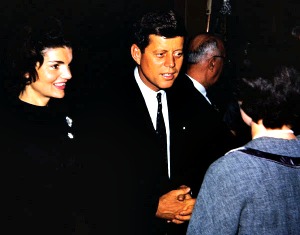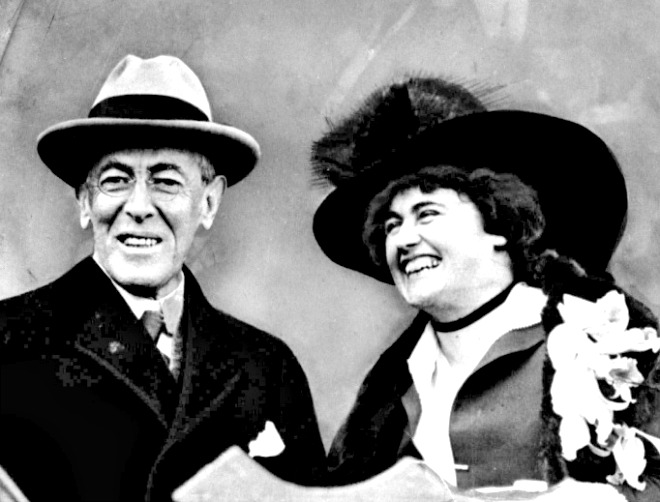What If a President Is Too Ill to Serve?
COMMENTARY: As physical fitness has recently become an issue in the 2016 presidential race, it's worth looking at past presidents who took ill during their service.

As Americans consider the two major-party nominees for president this year, they might be struck by the combined ages of Donald Trump and Hillary Clinton. We are looking at a record. Trump is 70 years old, and Clinton will turn 69 this October. And the former hasn’t hesitated to question the “stamina” of the latter, including during their first presidential debate.
Clinton, of course, hasn’t helped dispel suspicions, almost collapsing after visiting the 9/11 Memorial in New York, experiencing several lengthy coughing bouts in public and even being diagnosed with pneumonia. The candidates’ doctors have given public-health reports on their patients.
(Physical) fitness has become an issue in the 2016 presidential race.
And why not? Health concerns have long plagued the presidency. That’s a history as old as the presidency itself, all the way back to George Washington, who died only two years after he left office.

Health concerns hampered even our youngest elected president, John F. Kennedy, who suffered terribly throughout and before his presidency, most notably with Addison’s disease, which caused him great pain. Biographer Richard Reeves estimated that Kennedy had last rites administered to him five times in his lifetime. There were scary occasions when friends and family thought the young Jack was going to die, all well before he was assassinated in November 1963.
A good friend of Kennedy was no less than his Republican rival, Richard Nixon, who competed with him for the presidency in 1960. The two men were quite close, once sharing a sleeper car together on a Pullman train headed to and from western Pennsylvania as they debated as congressmen. Nixon would later tell a moving story about breaking down in tears after visiting the young Kennedy during one of his serious illnesses; he came away convinced that “poor Jack” wasn’t going to make it.
This was a side of JFK that his Senate colleagues saw up close. The brooding Lyndon B. Johnson, later Kennedy’s vice president, once referred to Jack as “that skinny little kid with rickets.” Indeed, Kennedy was downright skeletal in his appearance. The handsome profile for which he is better known during his presidency was ironically the product of his wiry frame being artificially puffed up by constant cortisone shots he took to treat the Addison’s (an endocrine disorder in which the adrenal glands do not produce enough steroid hormones).
And cortisone was far from the only drug he was absorbing. Kennedy was regularly pumped full of pills and medications. His physician, Dr. Max Jacobson, was infamously known as “Dr. Feel-Good.”
JFK ailed so much, so often that, had he survived the assassination, he still might not have lived a long life after the White House. He was one of our youngest presidents and one of our most frail.
Kennedy had succeeded a president, Dwight Eisenhower, for whom age and health were always in question. Ike, whom JFK called “the old man,” suffered from everything from heart problems to digestive issues.
Any one of many chief executives — from William Taft and his obesity to Grover Cleveland and his oral cancer to Calvin Coolidge and his depression — is an interesting case study in presidential sickness, but there were two presidents in the last 100 years whose rapidly deteriorating physical capabilities adversely affected their mental decision-making in the closing months of their presidencies: Franklin Roosevelt and Woodrow Wilson.
Franklin Delano Roosevelt had spent years in a wheelchair because of polio, a reality that his fawners in a sycophantic press took impressive lengths to conceal from the general public.
But, ultimately, polio aside, FDR’s general health declined very rapidly from the outset of his fourth and final presidential term. I have argued that FDR’s calamitous foreign-policy decisions in those final weeks of his presidency — that is, those that ceded Eastern Europe to Stalin’s Soviet Union — were influenced in part by his weakening physical and mental capacities.
Specifically, it was the first week of February 1945, and FDR traveled to Yalta to meet with Winston Churchill and Stalin in what became the most crucial “Big Three” conference of the end of World War II and (it turned out) the start of the Cold War.
Anyone who has seen a photo of FDR from Yalta is struck by his emaciated appearance — just as Stalin was shocked, and no doubt recognized an opportunity for exploitation.
FDR looked like a ghost of himself. He was, in fact, a man literally dying. He was worn down terribly, and the decisions that he made there were crucial in enabling Stalin’s USSR to seize wonderful allies like Karol Wojtyla’s Poland.
FDR’s hagiographers try to excuse his decisions at Yalta, but the hard truth is that FDR himself knew right away that he had failed.
He knew that Stalin had exploited him.
“I didn’t say the result [at Yalta] was good,” he told his close adviser Adolf Berle when he returned home. “I said it was the best I could do.” Admiral Bill Leahy complained to FDR, “Mr. President, this [agreement] is so elastic that the Russians can stretch it all the way from Yalta to Washington without technically breaking it.”
In response, FDR sighed: “Bill, I know it. But it’s the best I can do for Poland at this time.”
It might have been the best he could do energy-wise. He didn’t have much left.
FDR told Anna Rosenberg on March 23, 1945, three weeks before he collapsed: “Averell [Harriman] is right. We can’t do business with Stalin. He has broken every one of the promises he made at Yalta.”
Stalin and the Soviets understood weakness. When they saw weakness, they preyed upon it, as they did with a hobbled FDR.
In a letter to Stalin on April 1, 1945, FDR bemoaned to the tyrant: “I cannot conceal from you the concern with which I view the development of events of mutual interest since our fruitful meeting at Yalta.”
Stalin surely chortled at that one. What was done was done. And FDR was done, too. He died mere days later.

Finally, there is the tragic case of President Woodrow Wilson, whose second term was plagued by mental and physical breakdowns, especially over his compulsive and exhausting barnstorming the nation to try to drum up support for his beleaguered League of Nations. In the process, Wilson endured three strokes between April and October 1919, the last of them particularly devastating.
His greatest gift — his oratorical skills — was silenced. His mind, too, was adversely affected.
Wilson became such a mess mentally and physically that he could not govern the country in the remainder of his second term. And yet, he refused to resign; quite the contrary, he did his best to cover up his debilitating situation. Wilson, his closest advisers and his wife, Edith, conspired to conceal the grave nature of his fitness. Some historians argue that Wilson basically handed over the keys to the ship of state to Edith.
In what British historian Paul Johnson aptly described as a “bizarre episode in American history,” Wilson aide Joseph Tumulty worked with Wilson and Edith to effectively allow Edith to do Wilson’s job, which she juggled for 17 months. Johnson thus argues that America has already had a female president: Edith Wilson, late 1919 to early 1921.
Long before Hillary Clinton launched her bid to become the first first lady to become president of the United States, Edith Wilson arguably did it first — without the approval of the ballot box.
And so, concerns about the health of our presidents may be an issue in 2016, but they are hardly new. This is a legitimate concern. Questions about our candidates’ health are not rude nor out of bounds. And, as both of the major parties’ candidates are past the standard U.S. age of retirement, they are entirely appropriate.
Paul Kengor is a professor
of political science and
executive director of The Center for Vision
& Values at Grove City College.
This story was updated after it was posted.

















